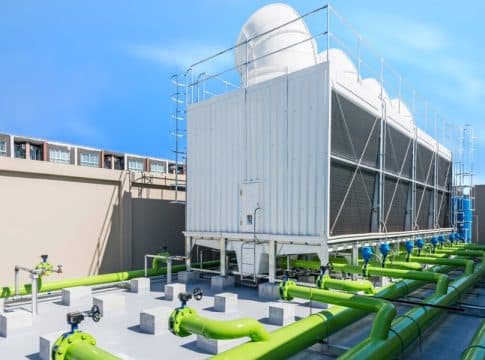U.S. DOE Injects $54.4M to Boost Carbon Management Tech and Cut Carbon Emissions
On August 13, The U.S. DOE (Department of Energy) announced a $54.4 million investment to reduce carbon emissions. This funding, provided by the DOE’s Office of Fossil Energy and Carbon Management (FECM), aims to advance carbon management technologies that come under its climate change portfolio.
DOE’s Agenda for Advancing Carbon Capture and Storage
Though President Biden has exited the race, his powerful Climate Agenda will keep driving progress for America. Thus, DOE’s investments are paving the way for the country toward the Biden-Harris Administration’s net-zero emissions goal by 2050.
So, what is included in this latest funding and how will it benefit the carbon economy? Here are the answers.
This funding will support a range of innovative approaches to reduce carbon dioxide (CO2) pollution. The focus is on developing clean technologies that can capture CO2 from both industrial processes and power generation sources, as well as directly from the atmosphere. Once captured, the CO2 can be transported for permanent storage deep underground or converted into valuable products like fuels and chemicals. Notably, these advancements in carbon management technologies will charge up its fight against climate change.
Brad Crabtree, Assistant Secretary of Fossil Energy and Carbon Management.
“Reaching our climate goals requires a significant scale-up of our carbon management projects and infrastructure. DOE’s investments in carbon management will address technical challenges and help reduce costs to accelerate the widespread deployment of these technologies across the Nation, while also helping to ensure projects deliver benefits to communities and workers and mitigate potential risks to public health and the environment.”
ALSO READ: US DOE to Shell Out $6B to Decarbonize Heavy Industries
Overview of the U.S. DOE Commercial Direct Air Capture Pilot Prize
The American-Made Commercial Direct Air Capture (DAC) Pilot Prize, supported by the Bipartisan Infrastructure Law, will accelerate the development of direct air capture projects that are ready for commercial application. These projects are expected to drive the industry forward, generate well-paying jobs, attract private sector investment, and bring the advantages of climate initiatives to communities that host clean energy projects. Funding for this initiative is sourced from Section 41005.b of the Bipartisan Infrastructure Law.
Certain criteria are set for eligibility for the prizes. Profit and non-profit private entities, non-federal government bodies like states, and municipalities, and academic institutions that meet the necessary criteria can participate. The prize aims to support DAC pilot projects that have completed the early stages but are yet to be included in the Regional Direct Air Capture Hubs program.
This Commercial DAC Pilot Prize offers a total of up to $52.5 million in cash prizes. Teams will receive prizes as they hit key milestones in design, development, and deployment, advancing through four phases.
Key Areas in FECM’s Carbon Management Funding Opportunity Announcement
The sixth round of FECM’s Carbon Management funding opportunity announcement (FOA) will support several key areas:
Reactive Carbon Capture for Conversion to Products
This area focuses on integrating carbon capture with the conversion of CO2 into useful products. It aims to design and validate reactive CO2 capture methods that work with exhaust flue gas from power plants and industrial sites. Additionally, it could also capture CO2 directly from the atmosphere to convert it into eco-friendly products with minimal emissions.
Engineering-Scale Testing for NGCC Power Plants
Projects will test carbon capture technologies at natural gas combined cycle (NGCC) power plants under real flue gas conditions. The goal is to achieve 95% carbon capture efficiency and CO2 purity while working toward a 30% reduction in capture costs.
Portable Carbon Capture Systems for Industrial Plants
This area supports the development and testing of portable carbon capture systems at various industrial sites, such as refineries, cement plants, steel mills, and more.
Preliminary FEED Studies for NGCC Power Plants
These studies will focus on commercial-scale carbon capture systems for existing NGCC power plants or combined heat and power facilities.
Pre-FEED Studies for Hydrogen Production
This area includes studies to advance carbon capture systems that achieve at least 95% capture efficiency. It could be a new or existing hydrogen production facility using coal, biomass, natural gas, or other feedstocks.
CO2 Transport Infrastructure Development
Pre-FEED studies will support the creation of multimodal CO2 transportation infrastructure capable of transferring CO2 across regional and national networks.
Furthermore, applicants must also consider the societal impacts of their projects, focusing on diversity, equity, inclusion, and accessibility. They must explain how their innovations will provide access to the benefits of these new technologies. For more details, check out the U.S. DOE’s official site.
Overall, DOE offers various grants, loans, and financing programs. These resources help startups, and local, state, and even tribal governments launch or scale up their projects to meet their energy goals.
READ MORE: U.S. DOE Aims to Expand Domestic Uranium Supply with US$2.7B RFP
The post U.S. DOE Injects $54.4M to Boost Carbon Management Tech and Cut Carbon Emissions appeared first on Carbon Credits.



